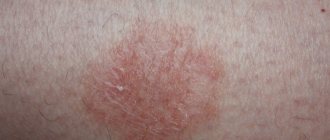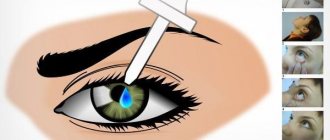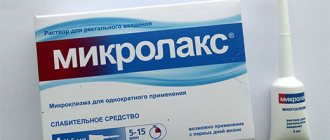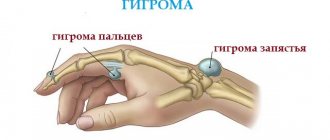Diagnosis and treatment of hygroma of the tendon of the hand and foot
Malfunctions of the body can lead to the formation of a disease such as tendon hygroma. The neoplasm is not oncological, which makes it relatively safe for humans, causing only pain. What types of hygromas are there, and possible ways to eliminate the disease, we will consider further.
Hygroma is a tumor that consists entirely of fluid. Most often, this disease develops in those places where there are the most tendons: the hands and the popliteal area of the joint. There have been no cases in the world where a hygroma turned into a malignant tumor, so its appearance should not be scary.
What is hygroma
Any person can develop a cyst on the arm, but few people know what a hygroma is, and when faced with this disease, people often confuse it with other tumors, and even with wen. In fact, hygroma is a lump that occurs most often on the back of the wrist, forming from the tissues of the joints, tendons and adjacent soft tissues. The hygroma capsule contains serous fluid, sometimes mixed with mucus and blood.
For a long period of time, hygroma may not cause the patient any discomfort other than aesthetic inconvenience. The lump grows quite slowly and does not cause pain. But in rare cases, there is a sudden appearance and rapid growth of a neoplasm. Despite the fact that this neoplasm is a benign tumor, if timely treatment is not started, the cyst can cause serious complications.
Diagnosis of the disease - which doctor to contact
Diagnosis of hygroma, as a rule, does not cause complications; the diagnosis can be made even during the initial visit to a surgeon, orthopedist or traumatologist .
You can also see a skin specialist, but they will refer you to an orthopedist.
To differentiate hygroma from osteoarticular pathology, arterial aneurysm, in order to identify the nature of the filling of the capsule with liquid for prescribing subsequent treatment, radiography or ultrasound is prescribed, which allows you to examine the structure, identify the degree of filling with liquid, and whether there are blood vessels in the walls.
Causes
To date, scientists have not been able to get an exact answer as to why a hygroma may appear on the hand. Experts suggest the following possible reasons for the appearance of tumors on the hands:
- Inflammatory processes - hygroma on the palm or back of the hand can form due to the development of inflammatory processes in the synovial membrane of the wrist or joint capsule (bursitis). A tumor can develop in the weakest place due to the fact that the synovial fluid exerts pressure from the inside.
- Genetic predisposition - since hygroma has some common features with oncological tumors, which include relapses and heredity, scientists suggest that the reasons for its occurrence lie in human genetics.
- Endocrine disorders - as a result of such disorders, a person begins to produce a lot of synovial fluid, thereby creating pressure in the tendon sheaths. This may cause further protrusion of the cyst capsule with serous contents.
Also, in addition to these reasons, there are some factors that can contribute to the development of pathology on the left or right hand:
- constant excessive stress on the hands, which may be caused by professional activities;
- joint diseases (arthritis, arthrosis);
- inflammatory processes in the joint capsule (bursitis)
- damage to the ligaments, articular sheaths or joint capsule due to injury;
- hereditary predisposition to the occurrence of benign neoplasms.
We recommend reading Spinal tumors - symptoms, treatment, types
If a hygroma appears in the hand area, in order to prevent its further growth and possible complications, you should immediately seek medical help and undergo appropriate treatment.
Symptoms
When a hygroma appears on the hand, at the initial stage of development the disease does not cause any specific manifestations, the symptoms do not cause inconvenience to the patient and do not cause pain. The growth of the cyst can be quite slow, continuing for several years. But it may also happen that the cyst begins to develop rapidly, and within a few weeks it will reach an impressive size.
A large hygroma is quite easy to identify, since it manifests itself in the form of a large tumor-like formation. If you press on the lump under the skin, the patient may feel tingling or even sharp pain, depending on the stage of development. A large tumor on the hand limits the movement of the joint, and therefore, a person may experience difficulty performing certain actions with the affected hand.
There are also cases when patients complain that the skin over the tumor may turn red and peel. A growing tumor can put pressure on the vascular system and nerve fibers, resulting in increased skin sensitivity or numbness. If you do not get rid of the tumor, hygroma can provoke various skin diseases, including ulcers.
In this case, immobilization of the wrist joint will not help get rid of the resulting lump. When a hygroma forms, it is imperative to carry out adequate treatment, otherwise it can cause undesirable consequences, the main one of which is the loss of functionality of the wrist joint.
Why is wrist hygroma dangerous?
Many people with hygroma are of the opinion that there is no need to remove the tumor, since it is not capable of degeneration. In fact, you need to get rid of the tumor. The fact is that, like any other cysts, hygroma tends to grow. The wrist area contains many nerve fibers and blood vessels.
As the hygroma increases in size, it will begin to put pressure on them, which will lead to such disorders as:
- Deterioration of sensitivity in the hand and fingers.
- Paresthesia and paresis of the hand.
- Painful sensations in the corresponding area. The pain will resemble shooting.
- Deterioration of hand nutrition due to compression of blood vessels. In this case, the skin of the hand will suffer, nails may crumble, and the muscles will become weak. In severe cases, small ulcerations and pustules may appear.
- If the veins are pinched, this can lead to swelling.
Therefore, if a hygroma is detected, you need to consult a doctor and remove the tumor in a timely manner. Another reason to get rid of a tumor is a cosmetic defect.
Diagnostics
If a small “bump” appears on your hand, you must go to the hospital and be examined by a trauma surgeon. Diagnosis of hygroma of the hand can be performed by a doctor without much difficulty, since hygroma of the hand has characteristic symptoms. When making a diagnosis, the doctor conducts an external examination of the wrist hygroma and palpates the lump. In some cases, the patient may be prescribed additional diagnostic measures:
- radiography;
- computed tomography (CT);
- magnetic resonance imaging (MRI);
- ultrasound examination (ultrasound).
The doctor can choose the most effective treatment method based on the results of the research. If the patient went to the hospital immediately after the tumor appeared, and the diagnosis was made at an early stage of development, treatment can be conservative, without the use of surgical procedures.
We recommend reading Osteosarcoma of the bone - signs, manifestations, diagnosis, treatment
Complications and rehabilitation after removal of hygroma
After surgery, the rehabilitation period depends on the ease of manipulation and compliance with safety rules:
- An abundance of foods containing calcium in your diet.
- Avoid placing stress on the operated joint.
To avoid complications, you should follow the rules for sterilizing instruments and the dosage when administering anesthesia. A patient with poor blood clotting may experience minor complications.
Dangerous side effects can occur with infection in the wound, accompanied by inflammation and possible suppuration, then the wound must be opened a second time. If you have any symptoms, you should immediately contact your doctor!
Treatment
Doctors determine how to treat a hygroma that appears on the hand based on research results, the location of the tumor and its size. Treatment of hand hygroma can be carried out using conservative methods or surgical intervention. It is worth noting that surgical removal of the tumor will be the most effective, especially when the tumor is large. But sometimes this technique may be contraindicated for the patient for some reason, or the patient himself may refuse the operation based on his own beliefs.
Surgery
This technique is considered the most effective in treating hygroma. During the operation, an incision is made into the skin over the lump, after which the doctor removes all the affected tissue. A special feature of this treatment is the fact that after surgical removal of the tumor, the patient does not have to worry that it will appear again, since the risk of its recurrence is reduced to zero.
Refusing surgical treatment, many patients are confused in choosing a treatment method, since often the tumor, in case of relapse, increases several times and can cause serious consequences. Modern medicine can offer new methods for removing hygromas that take less time and are more gentle, for example, removing hygromas of the hand using a laser or endoscopic method. All the time until the end of treatment and recovery after surgery, the patient must protect the hand from any stress.
Puncture
This type is very relevant among patients, since puncture is effective and at the same time the safest method of treating hygroma. During the puncture, the formation is pierced with a needle, after which its contents are pumped out using a syringe. After the doctor empties the hygroma capsule, he injects medications into it to prevent the inflammatory process.
Since the tumor is associated with the membrane of the wrist joint, puncture is safer for neighboring healthy tissues, tendons and nerve endings of the wrist, which can be damaged during surgery. But this method cannot eliminate the possibility of tumor recurrence.
Conservative treatment
If the patient consulted a doctor immediately after identifying a lump on the hand, therapy can be carried out without surgery, using conservative treatment. In some cases, the use of conservative methods of therapy may be due to the presence of contraindications for the patient to undergo surgery. During such treatment, the patient may be given compresses with medicinal ointments or gels, and may also be prescribed medications. The complex of conservative therapy includes physiotherapeutic procedures, such as electrophoresis, paraffin applications, and ultraviolet irradiation.
We recommend reading Brain cavernoma - what it is, treatment, causes
Traditional treatment
Many people, having discovered an incomprehensible “bump” on their hand, do not even go to the doctor and independently try to find some kind of traditional medicine that would help them get rid of the unpleasant cosmetic defect. Most patients who have not been examined and have not consulted with a doctor consider hygroma to be nothing more than a cosmetic problem.
Unfortunately, traditional medicine is powerless against such tumors. No baths, compresses, lotions, decoctions or infusions will help get rid of the capsule with serous contents. In addition, such methods of therapy may not only have no effect, but also cause harm. To get rid of such cysts, you must consult a doctor. Traditional methods can be used only in the postoperative period and then only with the permission of the attending physician. Independent choice of this method can lead to inflammation of the entire joint.
Traditional methods
Many people, when they discover a hygroma of the wrist, begin to treat the pathology on their own, without visiting a doctor. This is not recommended, as it can only worsen the course of the disease and accelerate the growth of the tumor. Usually folk remedies are used for medicinal purposes. But they should not be the main therapy. It is better to use folk remedies in tandem with other treatment methods.
It is also worth noting that if no improvement is observed throughout the use of such treatment methods, or the tumor continues to grow rapidly, then in this case you should immediately contact a medical professional. institution for performing surgery to remove hygroma.
Popular folk remedies for the treatment of hygroma:
- cabbage and honey. Used as a compress. This folk remedy should be used with caution by people who are allergic to bee products;
- compress with beef bile;
- alcohol compresses;
- red clay and sea salt.
Forecast
With a surgical approach to treatment, the prognosis for hygroma is favorable. Since the capsule is completely removed during the operation, recurrence of the disease becomes impossible. The field is conservative therapy, and even after puncture there is a high risk that the capsule will fill with fluid again and will continue to fill until the surgeon removes it. In the complete absence of treatment, the capsule may spontaneously open and its contents may spill into the surrounding tissues and joint, which leads to suppuration, inflammation and other serious complications.
Hygroma on the finger - how to treat?
Hygroma on the fingers, especially on the thumb, becomes the most unpleasant and disruptive to life.
An effective and modern method of treating hygroma on the fingers today is laser removal.
It is performed under local anesthesia and the procedure itself lasts no more than an hour . First, puncture of the formation is performed with two needles.
Through one of them, a laser light guide is inserted into the hygroma; it is heated to a temperature at which the affected area is burned out without affecting healthy tissue.
The contents are aspirated through a second needle. After this, an anesthetic is injected into the cavity and a tight compression bandage is applied.
The advantages of this method of removing hygroma on a finger over traditional excision are that it is much less traumatic , since it only affects the cyst itself, unlike a scalpel, which will inevitably affect healthy tissue.
Rehabilitation with this method proceeds much faster , since under the influence of high temperature the process of restoration of the epidermis starts. Also, when removing hygroma with a laser, there is less risk of inflammatory processes, since the laser “disinfects” the operated area and seals small capillaries, preventing the occurrence of subcutaneous bleeding.
Due to these advantages, laser removal is prescribed when hygroma occurs on the fingers, when the traditional method can lead to the risk of damage to surrounding tissue, or the patient does not want to have scars at the site of the operation.
Prevention
Preventive measures boil down to avoiding factors that provoke the occurrence of hygroma. If a person is professionally involved in sports during which a large load is placed on the hand (for example, weightlifting or athletics, tennis, fencing), then during training and exercise it is necessary to wrap the hands with an elastic bandage. Seamstresses, programmers, musicians and secretaries should periodically warm up their hands.
It is necessary to take precautions in any matter, this will help prevent the occurrence of limb injuries with the subsequent occurrence of hygroma.










